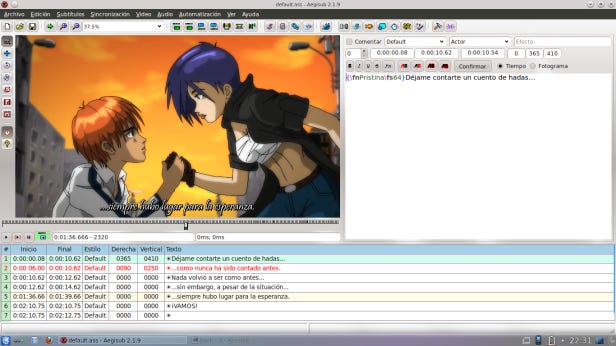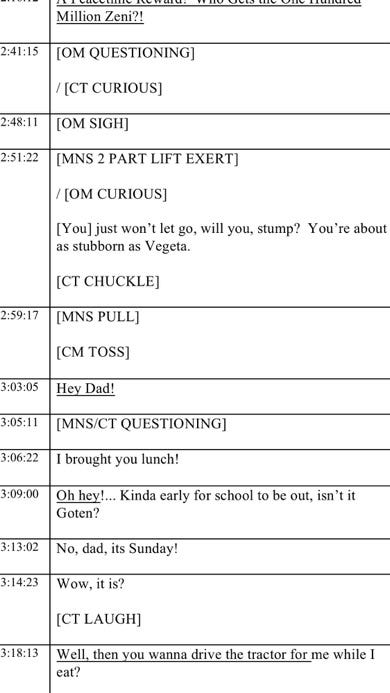The Dub Life
Behind the scenes with an automated dialogue replacement scriptwriter
By Rita Spinale
Japanese animation is a godsend to people who are in love with the art of its storytelling. Anime refers to all genres of Japanese animation regardless of topic or style. Usually, anime is known to have its own unique artistic style, but nowadays it is debatable which shows are considered to be anime or just cartoons. After anime are created in Japan, the shows are sent to other countries, then subbed and dubbed so that people who do not speak Japanese can also enjoy the stories.
When a show is sent to a studio, it goes first to subtitlers who watch it and put subtitles at the bottom of the screen. They also write the subtitles down as a script for the writers. When the show is sent to the writers, they take away all of the audio, and timestamp it so every millisecond is shown on the screen.
It’ll look a little like this:
In this image, we can see the show time stamped by the millisecond, alongside lines of dialogue.
Using the script from the subtitler, writers then tweak the dialogue to match the character's mouth movements. The point is to not change the storyline, but make the dialogue as close you can to the original. Sometimes the mouth movements can be tricky, and you’ll have to change certain phrases or wait to add a certain line when the character's mouth isn’t shown!
Writers will also work with the director of the project to help the voice actors grasp the tone and attitude for each line. Voice actors in the booth only see the show with the timestamp; they hear a beep in their headset to mark when they should speak. It takes time and practice! There could be last minute dialogue changes because sometimes the translations aren’t the right fit. It happens!
Here is an example of a trial script:
In this example, from the show Dragon Ball, you can see random letters; OM, CT, CM, MNS. Which all have meaning! OM means open mouth which means the actor in this example would make a “questioning” sound with their mouth open. CM means closed mouth so they would do their action with their mouth closed. CT means clenched teeth. In this example, the voice actor would clench their teeth and improvise noises that could represent curiosity, chuckling, laughing, or a “toss” gesture as if they were tossing an object. MNS means mouth not shown. This gives the writer potential to add in lines that are necessary to a story that doesn't match the mouth flaps. Then there are also phrases that are underlined. These lines are from characters that are not shown on the screen. Not shown in this script example is the word “OFF,” which means the character is talking internally and there are no mouth movements. This gives the writer a lot of flexibility to continue the storyline.
It can take a couple of days before you get into the flow of writing these scripts. Recording with a voice actor will take a couple sessions, as well if there are changes to be made. It is very fast paced, but very doable for anyone! Being one of the first people to see the story is also a great perk! This process is incredibly easy and once you get the hang of it you’ll be a great automated dialogue replacement scriptwriter!
Edited by Isabelle Briggs




